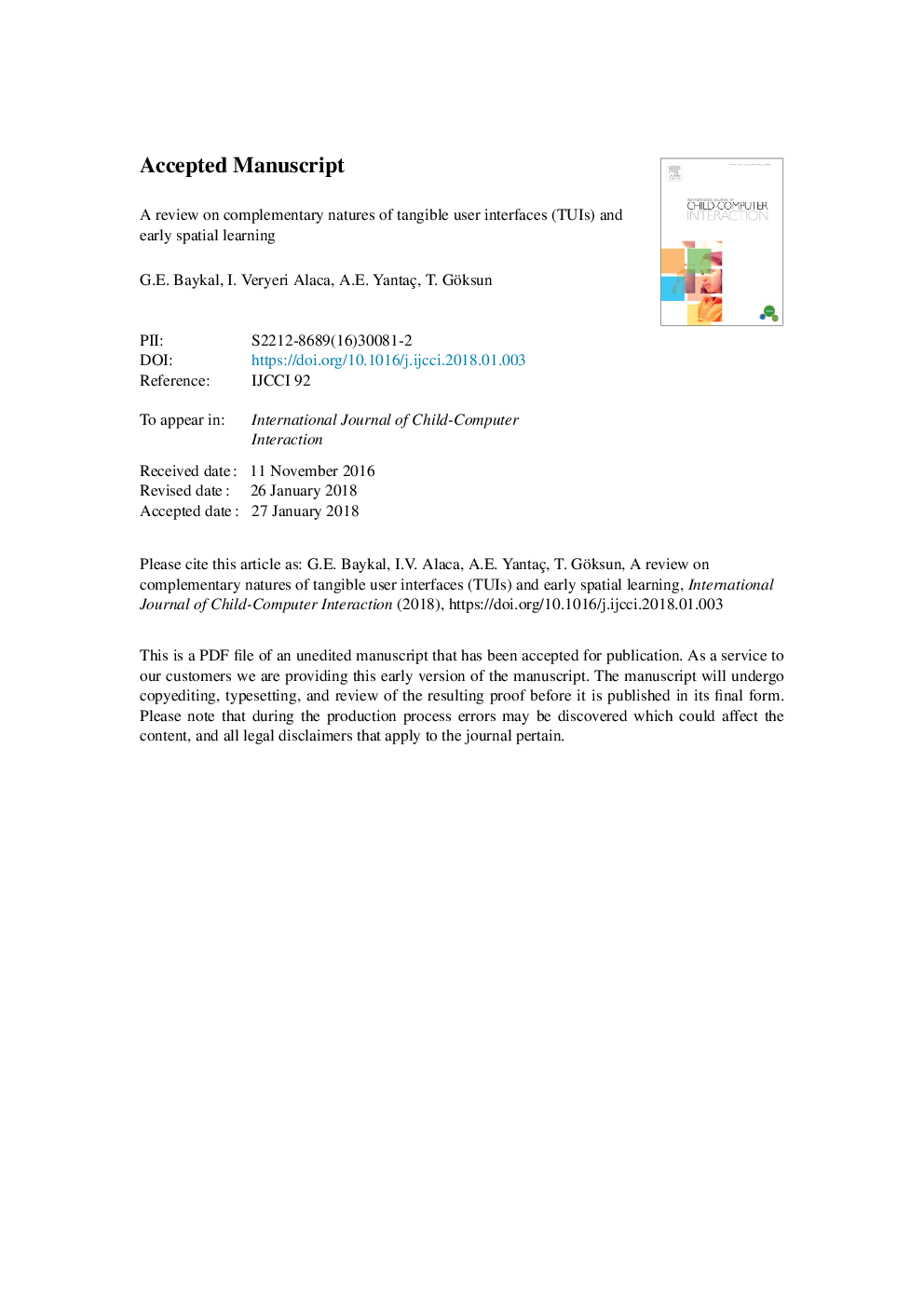| Article ID | Journal | Published Year | Pages | File Type |
|---|---|---|---|---|
| 6795283 | International Journal of Child-Computer Interaction | 2018 | 22 Pages |
Abstract
Spatial skills are essential for everyday tasks, and technology blends seamlessly into children's everyday environment. Since spatiality as a term is ubiquitous in experience this paper bridges literature in two fields: theories on early spatial learning in cognitive development and potential benefits of tangible user interfaces (TUIs) for supporting very young children's spatial skills. Studies suggest that the period between 2 and 4 years of age is critical for training spatial skills (e.g., mental rotation), which relate to further success in STEAM (science, technology, engineering, arts, and math) disciplines. We first present a review of the empirical findings on spatial skills, early interventions, and tools (i.e., narrative and gesture input) recommended for training preschool children's spatial skills. By situating the work within the use and benefits of manipulatives (e.g., building blocks, puzzles, shapes) combined with digital affordances in interaction design, we address the relevance of TUIs as complementary tools for spatial learning. We concentrate on the supporting properties of TUIs that enable playful learning, make storytelling more concrete, and provide embodiment effects through physicality. Through various products found in the market and literature that address the physical-digital convergence, we invite designers and researchers to consider design practices and applicable technology that build on present efforts and paradigms in this area. To contribute to this area, we conclude with a discussion of the gaps in design methods to develop technologies for children younger than 4 years old, and propose directions for future work to leverage new tools that serve very young children's spatial learning and possible inquiries for dual payoff.
Related Topics
Physical Sciences and Engineering
Computer Science
Human-Computer Interaction
Authors
G.E. Baykal, I. Veryeri Alaca, A.E. Yantaç, T. Göksun,
